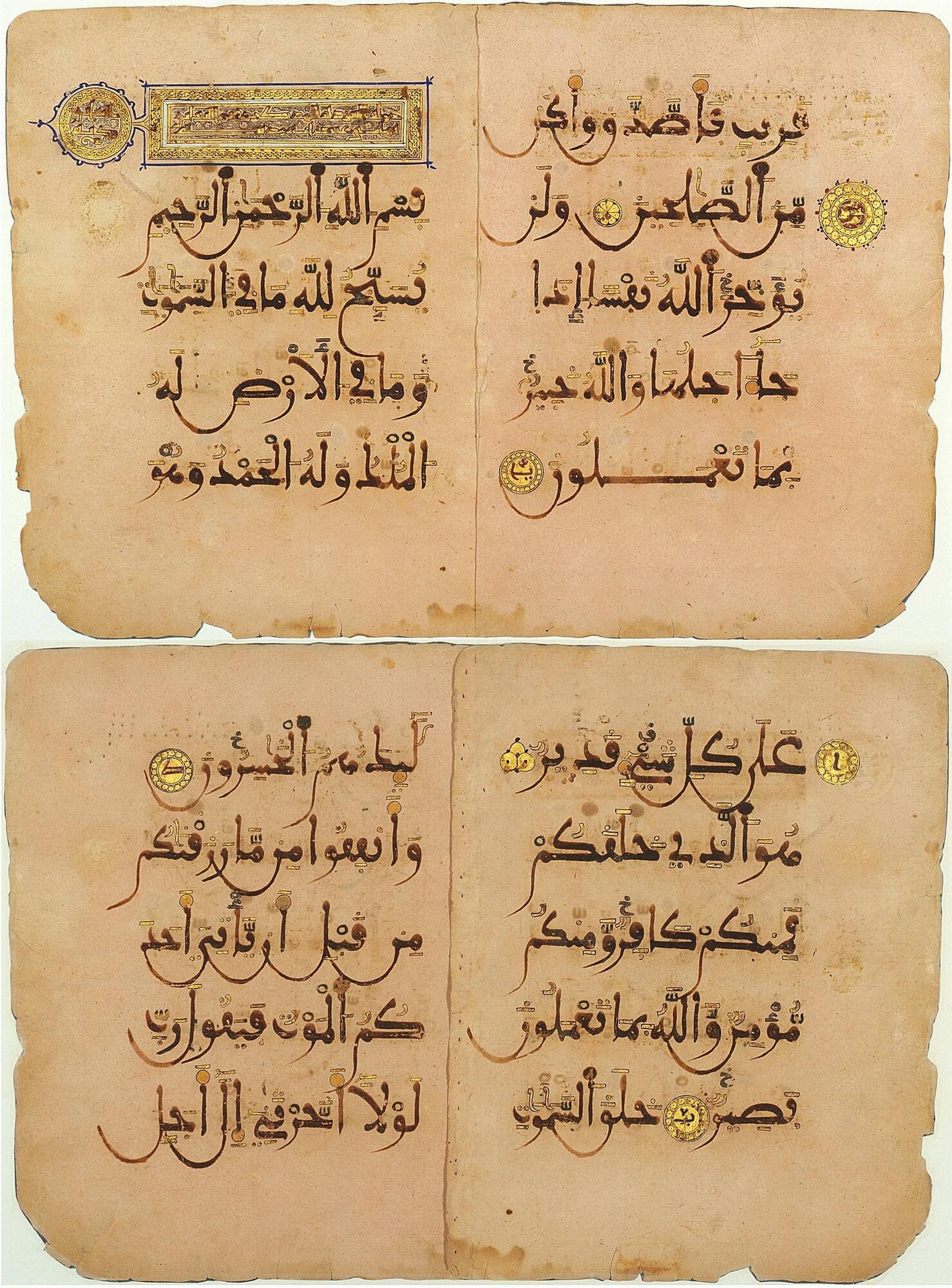
Object Details
Culture
Southern Spain (probably Granada)
Date
13th century
Medium
Ink and gold on paper
Dimensions
Each sheet: 9 3/4 × 13 1/4 inches (24.8 × 33.7 cm)
As mounted: 19 3/4 × 13 1/4 inches (50.2 × 33.7 cm)
Frame: 21 3/4 × 27 7/8 inches (55.2 × 70.8 cm)
Credit Line
Acquired through the George and Mary Rockwell Fund
Object
Number
2000.141.002
After paper became the preferred medium for Qur’ans in the late tenth century, the format shifted (…)
After paper became the preferred medium for Qur’ans in the late tenth century, the format shifted to a vertical orientation. These pages feature the elegant and graceful rhythms of the calligraphic style known as Maghribi, which reached its full development from the twelfth to fourteenth centuries in Muslim-ruled areas of North Africa and Spain. The peach-colored paper, called al-waraq al-shatibi, may have come from the celebrated papermaking center Játiva in Spain. The passages covered by these pages (including both recto and verso) are from Surah LXIII (The Hypocrites), verse 9 to Surah LXIV (Mutual Deceit), verse 3. Each verse is marked by a gold medallion; in the center of the larger of these is a letter or letters that indicate the verse number. The Surah heading, embellished in gold, consists of a panel containing the name of the chapter and where it was revealed, written in Kufic script and decorated with blue palmette scrolls, all within a border of interlaced pattern.












